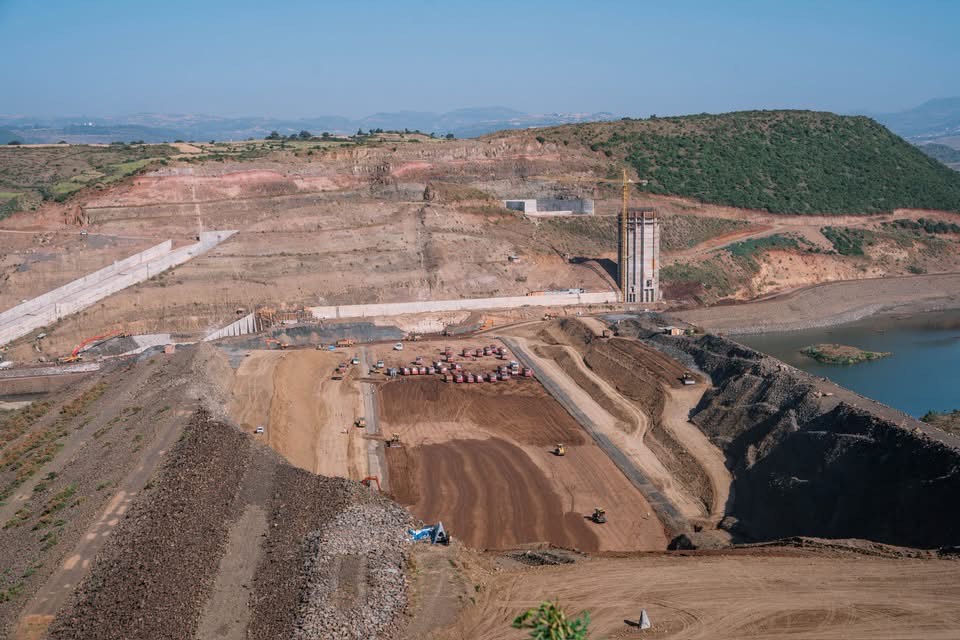Ethiopia’s Magatch Dam: A Landmark in Agricultural Transformation
Ethiopian Prime Minister Abiy Ahmed recently visited the newly constructed Magatch Dam in the Gonder area of the Amhara region. Marking a significant step in the nation’s agricultural transformation and commitment to food security, this dam stands as the first major irrigation facility in the region. The project was first envisioned in 2008, but was delayed several times due to lack of funding and necessary support from the government. Overcoming this frustration has been a significant step for Ethiopia, which must develop rapidly to keep up with growing demand and a population boom. The dam’s near completion will no doubt be met with consternation in downstream Egypt, which views all irrigation projects in Ethiopia as a threat to its own water security. It is nonetheless a great moment of pride for the people of Goder to see their water resources being developed.
Abiy’s inspection is part of a broader initiative to assess extensive agricultural and irrigation projects across Amhara, which has faced recent security and environmental challenges. The Prime Minister highlighted the dam as a “vital investment in Ethiopia’s agricultural future,” currently providing irrigation for approximately 870 hectares of farmland, with future plans to expand this coverage to over 17,000 hectares upon the project’s completion.
During his visit, Abiy confirmed that the construction of the Magatch Dam is progressing well, spotlighting the successful diversion of the Magatch River, a critical tributary in northern Ethiopia. The river flows into Lake Tana, and its management is crucial for ensuring smooth project development. Abiy reassured stakeholders that the construction is on schedule and adheres to national engineering standards.
The dam is envisioned not just as a technical accomplishment but as a means to empower local farmers and create employment opportunities. “This project embodies self-reliance—producing what we eat and securing livelihoods,” Abiy emphasized, reflecting the government’s commitment to economic independence and food sustainability.
Abraham Belay, Minister of Lowlands Development, reported that specialized civil engineering and hydrological teams constructed the dam. While the primary structural works are complete, ongoing tasks include filling and reinforcement. The government anticipates the Magatch Dam will be officially inaugurated before June 2026.
The Magatch River is one of northern Ethiopia’s principal waterways, initiating near Gondar and moving south towards Lake Tana. It encompasses several tributaries, including the Demaza, Angerib, and Ahyamizuria rivers. Understanding the hydrology of this river is crucial, as the dam is part of an expansive government initiative covering both the Magatch and Ribb river basins.
This initiative aligns with the Nile Basin Initiative, aiming to develop up to 20,000 hectares of arable land and enhance irrigated crop production, pivotal to Abiy’s efforts for economic and agricultural modernization.
The announcement of the Magatch Dam also bears significant regional implications, particularly concerning Egypt and Sudan. This development comes just a short time after Ethiopia officially launched the Grand Ethiopian Renaissance Dam (GERD), which focuses on hydropower generation. Unlike GERD, the Magatch Dam is centered on irrigation and food production, yet analysts caution that it may reignite discussions surrounding the equitable use and management of Nile waters, a highly sensitive topic in the region.
In conclusion, the establishment of the Magatch Dam represents a pivotal move towards ensuring Ethiopia’s agricultural resilience and self-sufficiency. As the project nears completion, it embodies the hopes of local farmers and the nation for sustainable food production and economic growth. For further insights into Ethiopia’s agricultural strategies and Nile water management issues, refer to Ethiopia’s Agricultural Policies and Nile Water Agreements.
By embedding external links like the ones suggested, the article improves its SEO potential, enhances reader engagement, and offers reliable resources for further exploration.
